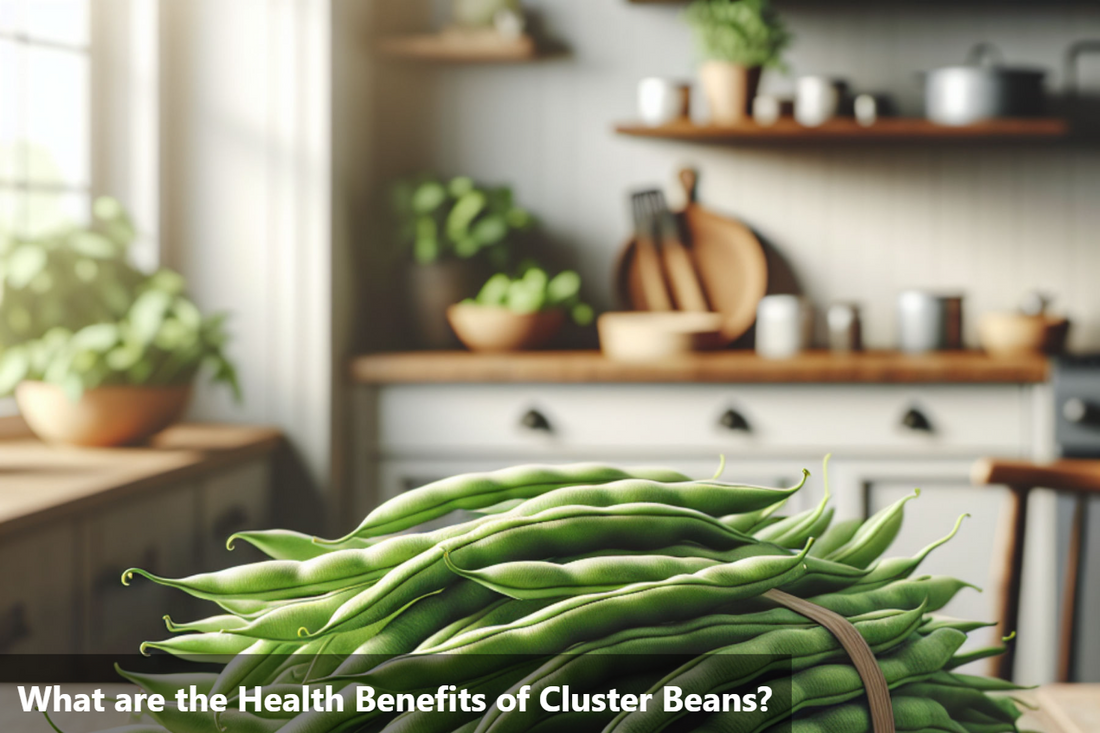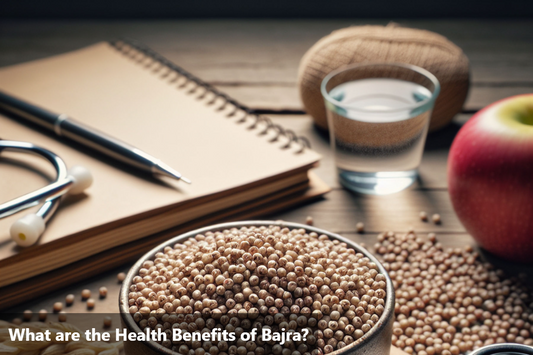Cluster beans, also known as guar or gavar, are green, slender, and slightly curved pods that belong to the legume family. Originating from India, cluster beans have gained popularity worldwide for their nutritional benefits and versatility in various cuisines. These beans are a rich source of vitamins A, C, and K, as well as minerals like potassium, iron, and calcium.
The distinct bitter-sweet flavor of cluster beans adds a unique taste to dishes and makes them a favorite ingredient in Indian, Middle Eastern, and Mediterranean cuisines. They can be cooked in different ways such as stir-frying, steaming, or adding them to curries and stews.
Nutritional Value of Cluster Beans
The Nutritional Value of 100grams of Cluster Beans:
Nutritional component |
Value |
Carbohydrates |
5.31g |
Proteins |
3g |
Lipids |
0.31g |
Fibre |
3.7g |
Sugar |
2g |
Calcium |
156mg |
Iron |
3.96mg |
Vitamin C |
2.3mg |
Vitamin A |
200IU |
Energy |
35kcal |
Health Benefits of Cluster Beans
Rich in Nutrients: Cluster beans are low in calories but rich in essential nutrients such as vitamins (including vitamin C, vitamin K, and folate), minerals (including potassium, calcium, and magnesium), and dietary fiber.
Digestive Health: The high fiber content in cluster beans promotes digestive health by preventing constipation, supporting regular bowel movements, and maintaining a healthy gut microbiome. Fiber also aids in preventing digestive disorders such as irritable bowel syndrome (IBS) and diverticulosis.
Blood Sugar Management: Cluster beans have a low glycemic index, meaning they cause a gradual and steady increase in blood sugar levels. This property makes them beneficial for individuals with diabetes or those looking to manage their blood sugar levels effectively.
Heart Health: The potassium and magnesium content in cluster beans helps in regulating blood pressure and supporting cardiovascular health. Additionally, the fiber content helps in lowering cholesterol levels, reducing the risk of heart disease and stroke.
Bone Health: Cluster beans are a good source of calcium, which is essential for maintaining bone health and preventing conditions like osteoporosis. Vitamin K, present in cluster beans, also plays a role in bone metabolism and calcium absorption.
Weight Management: Cluster beans are low in calories and high in fiber, making them a filling and satisfying food choice. Including cluster beans in meals can help control appetite, promote satiety, and support weight management efforts.
Antioxidant Properties: Cluster beans contain antioxidants such as flavonoids and polyphenols, which help in neutralizing free radicals and reducing oxidative stress in the body. This may help in lowering the risk of chronic diseases and promoting overall health.
Anti-inflammatory Effects: Certain compounds present in cluster beans exhibit anti-inflammatory properties, which may help in reducing inflammation in the body and alleviating symptoms of inflammatory conditions such as arthritis.
Immune Support: The vitamin C content in cluster beans helps in boosting the immune system, supporting wound healing, and protecting against infections and illnesses.
Pregnancy Health: Cluster beans are a good source of folate, a B-vitamin that is important for fetal development during pregnancy. Adequate folate intake helps in preventing neural tube defects and supporting maternal health.
Incorporating Cluster Beans into Your Diet
Simple Stir-Fry: Heat some oil in a pan, add chopped cluster beans, and season with mustard seeds, turmeric, and salt for a quick and healthy stir-fry that pairs well with rice or roti.
Protein-Packed Salad: Combine blanched cluster beans with cherry tomatoes, feta cheese, and a refreshing lemon vinaigrette for a nutrient-rich and satisfying salad.
Flavorful Curry: Prepare a flavorful curry by sautéing onions, garlic, and tomatoes with cooked cluster beans, along with a blend of aromatic spices like cumin and coriander. Serve with steamed rice for a wholesome meal.
Nutrient-Boosted Soup: Enhance your favorite soup recipe by adding boiled cluster beans along with other vegetables for an added dose of fiber and vitamins.
-
Snack on Roasted Cluster Beans: Toss cluster beans in olive oil, sprinkle with your favorite spices, and roast in the oven for a crunchy and guilt-free snack option.
Bottomline
Cluster beans, also known as guar beans, are a powerhouse of nutrients that offer a wide array of health benefits. Rich in vitamins, minerals, and antioxidants, these beans are a versatile addition to any diet. By incorporating cluster beans into your meals, you can boost your overall health and well-being.
One of the key benefits of cluster beans is their ability to improve digestion. The high fiber content in these beans helps in promoting a healthy digestive system and preventing issues like constipation. Additionally, cluster beans are beneficial for weight management due to their low calorie and high fiber content, making them a great addition to a balanced diet.
This Blog post is an initiative by DiabeSmart, to provide accurate and Nutritionist / Doctor approved information related to Diabetes. DiabeSmart is India's first Food brand designed specifically for Diabetics, that has been clinically tested on Diabetics and Pre-Diabetics to deliver 55% - 70% lower Sugar spikes. DiabeSmart is part of Lo! Foods - India's leading brand for Everyday Functional Health foods.









